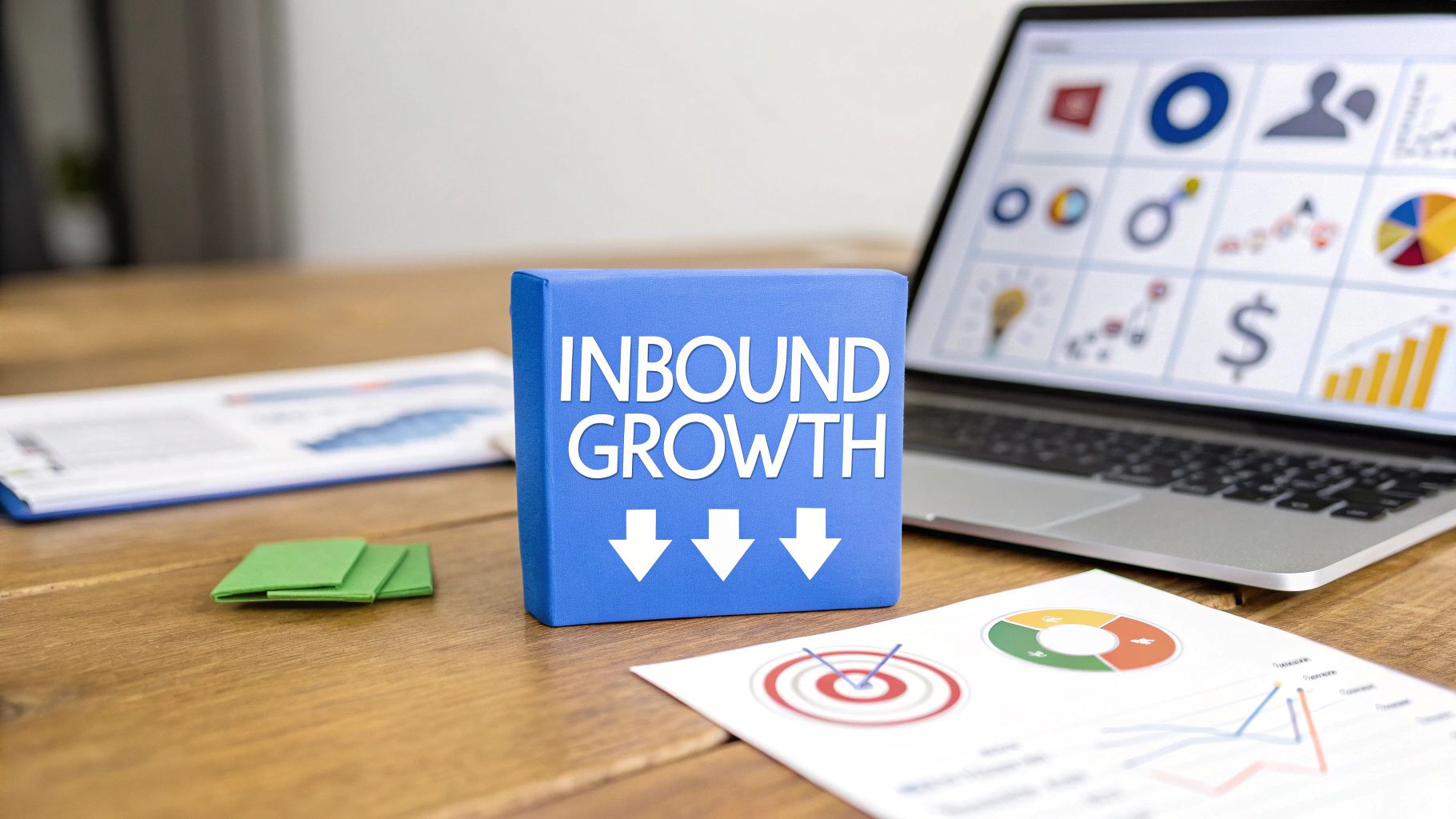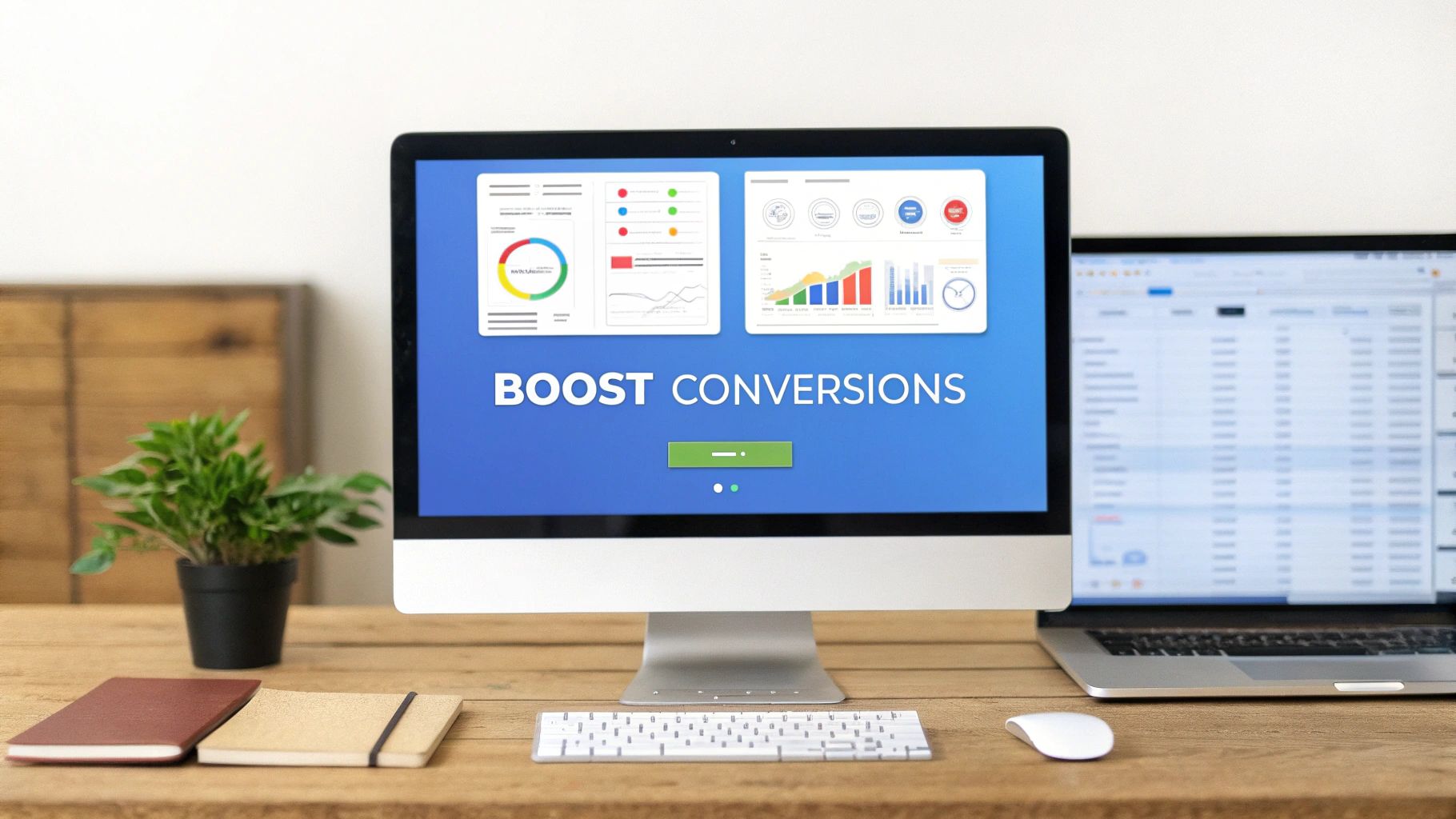Summary
Creating dynamic landing pages tailored to each Google Ads keyword can significantly improve your PPC campaign's performance. Personalizing your landing pages to reflect the visitor's search terms increases relevance and enhances user experience, leading to higher conversion rates. In this article, we’ll walk you through the process of setting up dynamic landing pages using LanderMagic, ensuring you make the most of every click.
The Importance of Dynamizing Your PPC Landing Pages
Dynamic landing pages are a powerful tool in your digital marketing arsenal. Here’s why:
- Relevance: Tailoring your landing pages to the user's search query increases relevance, which is crucial for maintaining user engagement.
- Conversion Rates: Personalized content makes visitors feel understood and catered to, which enhances trust and boosts conversion rates.
- Quality Score: Google rewards relevant landing pages with a higher Quality Score, which can lower your cost-per-click (CPC) and improve ad positioning.
- Psychological Impact: Reflecting the exact search terms on your landing page leverages the psychological principle of mirroring, making visitors more likely to stay and convert.
Step-by-Step Guide to Personalizing Your Landing Page with LanderMagic
Follow these steps to create dynamic landing pages with LanderMagic:
- Create a Free Account on LanderMagicsome text
- Visit the LanderMagic website and sign up for a free account. This gives you access to their platform and tools to create dynamic landing pages for Google Ads campaigns.

- Connect Your Google Ads Account
- Once logged in, navigate to the account settings and link your Google Ads account. This connection allows LanderMagic to pull in your campaign and keyword data, essential for creating dynamic landing pages.

- Go to 'Dashboard', Create Your First Project, and Select the Google Ads Customer Account You Want to Attach
- In your LanderMagic dashboard, start a new project. Choose the Google Ads account you want to associate with this project. This sets the foundation for your dynamic landing pages.

- Install the Magic Script on Your Website
- LanderMagic provides a JavaScript snippet that you need to install on your website (<head> tag ideally). This script enables the dynamic features on your landing pages. Detailed installation instructions are available within LanderMagic’s platform or in the tutorial video below.

- Create Your First Dynamic Page
- In the project, click on the ‘Dynamic Pages’ tab and create your first dynamic landing page.
- Create Your First Variable in the Dynamic Page You Just Created
- Set up variables within the landing page that will change based on the visitor’s search query. These variables could be text, images, or even entire sections of the page. This is essential for creating a dynamic keyword insertion landing page that tailors content to user searches.
- Setup Your First Dynamic Keyword and Set It as 'Live'
- Define your dynamic keywords and configure how they will be inserted into the landing page. This is a critical step in creating a dynamic keyword insertion landing page. Once everything is set up, make your changes live to display personalized content dynamically to your visitors.
Additional Tips for Effective Dynamic Landing Pages
- Use Clear Calls-to-Action (CTAs): Ensure your CTAs are prominent and relevant to the visitor’s search intent. This can significantly improve the performance of your dynamic PPC landing page.
- Test Regularly: A/B test different variations to find the most effective configurations for your dynamic landing pages.
- Optimize for Speed: Make sure your dynamic landing pages load quickly to avoid losing impatient visitors.
- Leverage Geolocation: Use Google’s geolocation data to further personalize landing pages based on the visitor’s location, creating an effective Google geolocation landing page.
By following this guide, you’ll be well on your way to creating high-converting, personalized landing pages for each of your Google Ads keywords with LanderMagic. Watch the tutorial video below for a detailed walkthrough and start maximizing your PPC campaign’s potential today!
The Proof Of The Power: Real World Use Case
For example, Garde-meuble.fr uses LanderMagic on his PPC landing page to dynamize the title, description, and background image to match the intent of every paid keyword.

Now, let's see the results:

✅ +8 points on the conversion rate
✅ -80% on the cost per lead
✅ +2 days saved creating landing pages for each adgroups
The results are indisputable. Personalizing a landing, its text, its main image concretely improves the landing page's conversion rate. Which leads to lower CPCs and CPAs!
Psychological Triggers That Enhance Conversion Rates
Incorporating psychological principles into your dynamic landing pages can significantly improve user engagement and conversion rates. Here are some key psychological triggers to consider:
- Principle of Relevance and Personalization
- Relevance Theory: Developed by Sperber and Wilson (1986), this theory suggests that people seek information that appears relevant and useful to them. When a landing page reflects the exact terms a user has searched for, it immediately appears more relevant, capturing and maintaining the user's attention.
- Effect of Validation
- Cognitive Validation Effect: Seeing the same words they typed reinforces cognitive validation for users. This creates a sense of recognition and mutual understanding, increasing their trust in the page and the business.
- Principle of Congruence
- Congruence Theory: Messages that align with the user's expectations and needs are more effective. A study by Meyers-Levy and Tybout (1989) shows that consumers respond more favorably to advertising messages congruent with their expectations.
- Effect of Repetition and Familiarity
- Mere Exposure Effect: According to a study by Zajonc (1968), familiarity through repetition of a word or phrase can increase positive perception of that word. When the keywords searched by the user are repeated on the landing page, it creates a sense of familiarity and comfort.
- Effect of Recognition
- Fluency Theory: Information that is easy to process and recognize is generally perceived more positively. Seeing the same keywords on a landing page makes information processing smoother for the user, enhancing user experience and conversions.
- Principle of Engagement
- Engagement Theory: The more users feel personally engaged or understood by a page, the more likely they are to actively engage with it. Seeing their own keywords on the page creates a personal connection and increases engagement.
- Effect of Cognitive Consistency
- Cognitive Consistency Theory: Proposed by Festinger (1957), this theory suggests that people seek consistency in their beliefs and behaviors. If the words on a landing page are consistent with those they searched for, it reduces cognitive dissonance and makes the purchase decision smoother.
- Effect of Priming
- Priming Theory: Bargh and Pietromonaco (1982) show that prior exposure to certain words can influence subsequent responses. Using the keywords searched by users on the landing page primes a positive response and increases conversion chances.
- Effect of Perceived Relevance
- Perceived Relevance Studies: A study by Hauser and Wernerfelt (1990) demonstrates that the user's perception of content relevance directly impacts their purchase decision. Personalizing landing pages with specific keywords increases this perception.
By enhancing your landing pages with dynamic content, including creating effective dynamic landing page adwords with dynamic text and image replacement on your landing pages, you align more closely with user intent, ultimately driving better results from your Google Ads campaigns.









